Pomegranate: how is the fruit useful?
It has long been legendary about the pomegranate. One of which says that thanks to the rim on the top of the fruit, the jewelers cast a golden crown. Another legend tells that burgundy berries were a favorite delicacy of the goddess Persephone, imprisoned in the Underworld of Hades. And according to some sources - in the Garden of Eden, Adam and Eve tasted the forbidden fruit, which was not an ordinary apple, but a pomegranate.
Grenades eaten for over 20 centuries. These exotic fruits hit the shelves in late autumn and early winter. Many people like to enjoy delicious grains, not knowing how they help their body.
Content:
- How the pomegranate fruit works
- Composition of pomegranate berries
- The benefits of the royal fruit and its scope
- Restrictions on the use of pomegranate seeds
- Methods for determining the ripeness of a pomegranate
- Keeping royal fruits
How the pomegranate fruit works
Pomegranates form on the branches of pomegranate trees or pomegranates, which are a bushy plant that belongs to the Dicotyledonous class, the Derbennikov family.
The Russian name for the fruit comes from the Latin granatus - grainy. The ancient Romans called pomegranates the Punic or granular apple. Therefore, the name of the culture contains a particle that translates as an apple.
Mediterranean countries are considered the birthplace of pomegranate, which still remain the main suppliers of royal fruit.
Pomegranate trees prefer to grow in areas that are generously endowed with the sun and can grow up to seven meters in height. The life span of a tree can be up to 130 years. During flowering on thorny branches, among the glossy green leaves, bright red, pitcher-shaped and funnel-shaped flowers are formed. From the first, fruits are formed, the harvest of which begins in September and can last until February.
Flowers form on a leathery calyx with five or seven lobes, at the throat of which stamens and petals are attached. In the middle there is a column of pistil with a thickened lobed stigma. The pomegranate fruit has a spherical shape and is covered with a coarse thick skin ranging from light orange to burgundy red. The diameter of the fruit can reach 18 cm. Inside one pomegranate there can be about a thousand seeds, which are distributed in separate chambers or nests located in two tiers. Each seed is hidden in a juicy pulp.
Composition and benefits of pomegranate berries
The average weight of one pomegranate is 170-220 grams. The grains of the royal fruit are 80% liquid, but the fruits are quite high in calories - one pomegranate contains about 85-90 kcal. And the calorie content of 100 ml of pomegranate juice is 60 kcal.
The beneficial properties of pomegranates are due to the beneficial substances it contains:
- vitamins A, PP, C, E and group B
- beta carotene
- macronutrients: iron, calcium, potassium, magnesium, sodium, phosphorus
- fatty acids
- saccharides
- organic acids: citric, malic, oxalic
- amino acids: cystine, arginine, hydroxyproline, serine, train, histidine, lysine
- dietary fiber
- fiber
- tannins
- phytohormones
- alkaloids
- antioxidants
One hundred grams of the edible part of the pomegranate contains: proteins - about 1 g; fat - about 1 g; carbohydrates - about 15 g.
To get the maximum benefit from pomegranates, you need to properly and regularly eat its fruits and juice. Useful components are also included in the seeds, peels and partitions - they are included in many recipes of traditional healers.
The benefits of the royal fruit and its scope
Pomegranate is a waste-free fruit - all its parts are useful, you just need to know how to use them correctly.
Pulp:
- Tasty pomegranate seeds help to get rid of many ailments and prevent their manifestation.
- The cardiovascular system. Eating pomegranate helps to strengthen the muscles of the heart and blood vessels, as well as lower blood pressure.
- Diseases of the kidneys and gallbladder. Pomegranate berries have a diuretic and choleretic effect without causing potassium deficiency.
- Royal fruit is added to the diet if the body is depleted or a person has been diagnosed with anemia. Iron, which is part of pomegranate, is able to increase hemoglobin in the blood.
- Studies have shown that regular consumption of pomegranate pulp helps cleanse internal organs and systems from radionuclides, and is also a powerful prevention of cancer.
- Thanks to the estrogens contained in the royal fruit, the hormonal background in women with menopause is normalized, the intensity of pain during menstruation decreases, and headaches are relieved.
- Pomegranate has a beneficial effect on men's health - it increases potency, accelerates blood circulation, which has a positive effect on erection.
Often people reject pomegranate seeds because of the presence of a hard seed in them, but the seeds can be an effective fortifying and healing agent:
- crushed bones relieve headaches and eliminate symptoms of hypertension, as well as increase hemoglobin in the blood
- ground pomegranate seeds with the addition of honey, have analgesic properties for toothaches. Compresses are made from the gruel on the gums
- whole grains of pomegranate help cleanse the intestines and improve its peristalsis, as well as normalize hormonal balance
- juice extracted from seeds helps in the treatment of kidney and liver diseases
Dried peel also has a number of medicinal properties:
- anthelmintic property - steamed crusts will help get rid of parasites, due to the presence of alkaloids
- astringent action - powdered peel helps in the treatment of enterocolitis and diarrhea
- healing - powder from the crusts is able to heal scratched and cracked skin
- disinfecting - rinsing with an infusion of crusts treat stomatitis, bleeding gums and sore throat
Also, hair is rinsed with infusions from pomegranate peels, which allows them to heal and enhance growth. The dried partitions contain useful substances that have a beneficial effect on the central nervous system: they relieve nervousness, anxiety, excitement, and soothe during stress. The partitions should be dried and brewed like tea. Take as needed.
Many have heard about the beneficial properties of pomegranate juice. It is widely used by folk healers:
- Against sore throats and colds - pomegranate juice helps to lower body temperature and relieve cough, stimulates the body's defenses.
- Against burns - compresses of juice diluted with water can relieve pain and irritation from burns.
- For weight loss - diluted juice helps to improve metabolism and digestive process.
- To remove harmful substances from the body - thanks to the antioxidants contained in royal fruits, the juice copes well with cleansing the body of radiation.
In cosmetology - the use of masks based on pomegranate juice helps in the fight against acne, age spots and freckles.It is important to remember that only freshly squeezed pomegranate juice is useful, which is easy to prepare at home. Pomegranate seeds have found applications in the preparation and decoration of many dishes. They are added to meat, salads and desserts, as well as decorate ready-made meals.
Restrictions on the use of pomegranate seeds
Along with the beneficial effects, pomegranates can easily harm the body. To avoid health problems, you should carefully study the contraindications to the use of royal fruits. Pomegranate should not be included in the menu:
- in diseases of the stomach and intestines - due to the content of organic acids in the fruit
- with heartburn, because pomegranate stimulates the production of gastric juice, which leads to a burning sensation
- allergy sufferers - pomegranate is a powerful allergen that can provoke allergic reactions even in healthy people if excessive use of ruby berries
- with constipation, because pomegranate has an astringent effect and its use on problem days can aggravate the situation
- in the presence of diabetes mellitus
- with hypotension, because pomegranate lowers blood pressure
When using pomegranates and its juice, it should be remembered that organic acids and iron in the composition of the fruit can negatively affect the condition of the tooth enamel. Therefore, after eating pomegranate seeds, you should thoroughly rinse your mouth with water, and it is recommended to drink pomegranate juice through a straw.
Methods for determining the ripeness of a pomegranate
When determining the ripeness of a pomegranate, one cannot focus only on the color of the berries. After all, red grains do not guarantee sufficient ripeness of the fruit. To choose ripe fruits, you should use some recommendations:
- Inspection of the peel. It should be moderately dry and firm, but thin and leathery. The peel of a ripe fruit has a slight roughness. The smooth surface of the skin indicates that the fruit was taken from the tree unripe. An overly dry peel indicates a long shelf life of the pomegranate. In ripe fruits, the skin is hardly damaged by light mechanical stress. And in unripe fruits, the peel is not strong enough and is easily damaged. Also, the peel should have a light gloss and uniform color. It should not have dark spots and other defects. The presence of cracks in the peel warns the buyer about the overripe fruit.
- Determination of the density of the fruit. The pomegranate should be dense in texture. Softness on palpation indicates a poor-quality product - it may turn out to be rotten, frost-bitten or damaged during transportation. With light squeezing of the fruit, the sound of crunching or creaking of the seeds should be heard.
- Tapping. When tapping the skin with your fingers, a booming metallic sound will emanate from a mature pomegranate. If the fruit is not ripe enough, then the sound will be muffled and quiet. To determine ripeness in this way, it is advisable to check several fruits and compare the sounds.
- By aroma. A quality ripe pomegranate should not have any aroma. Any extraneous odors indicate a poor-quality product.
- By weight and size. Ripe royal fruits are heavier than unripe specimens. If there is a scale available, then it will not be difficult to determine a more mature pomegranate. If there are no scales, then you need to hold the fruit in your hand. It should be weighty. Large sizes indicate juicy grains inside. But here not everything is clear - a lot depends on the type of pomegranate.
- By the stalk. The crown-shaped crown should be dry, open and no different in color from the fruit itself. The presence of minor greenery warns of immaturity.
Keeping royal fruits
It is important to properly preserve the pomegranates so that all the useful substances remain in them and the taste does not deteriorate. There are several ways to store fruit:
- In the fruit and vegetable compartment in the refrigerator.In this way, you can store the fruits for a long time, but they must be intact and not have any damage. The average shelf life in this way is two months. Fruit should be checked periodically and spoiled should be selected.
- Freezing - allows you to preserve pomegranate seeds. To do this, they are freed from the skin and placed in a bag or plastic container, tightly closed and sent to the freezer.
- Storage in clay - guarantees the preservation of the fruit for a long time. Clay is diluted with water to the consistency of sour cream. The crown of the fruit should be poured with the resulting mixture. After the clay has set, the pomegranates are wrapped in parchment paper and carefully placed in storage containers. The boxes are placed in a dark, dry room with good ventilation and a cool temperature. In this way, you can store not fully ripe fruits, because they will "reach" by the time they are consumed.
Grenades can be included in the diet of almost any person. It is only important to consider all contraindications. They will help strengthen the immune system and solve many health problems.
More information can be found in the video:




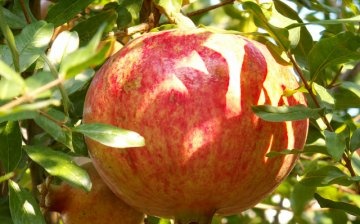
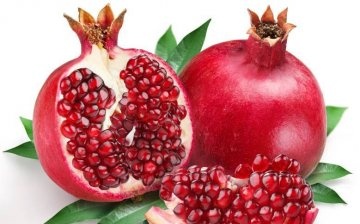
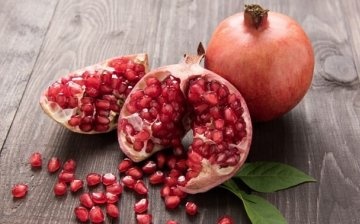
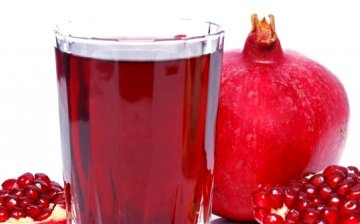
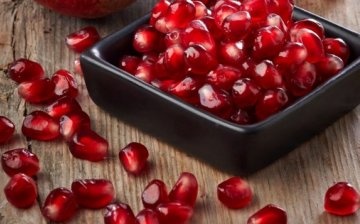
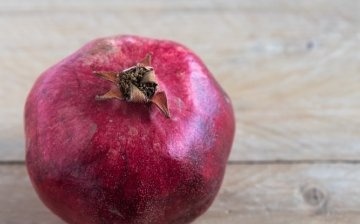









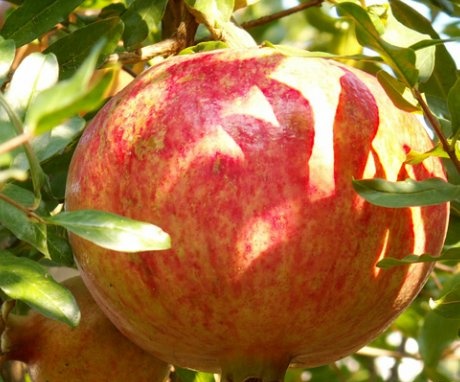

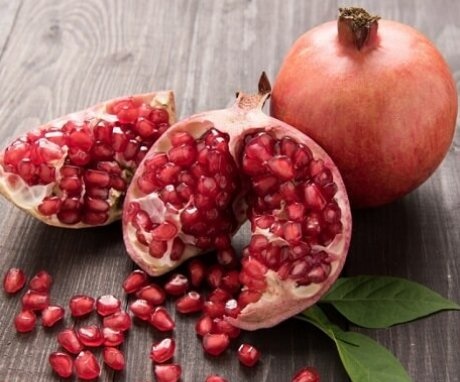


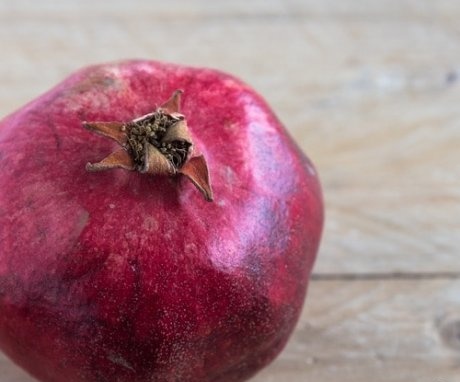
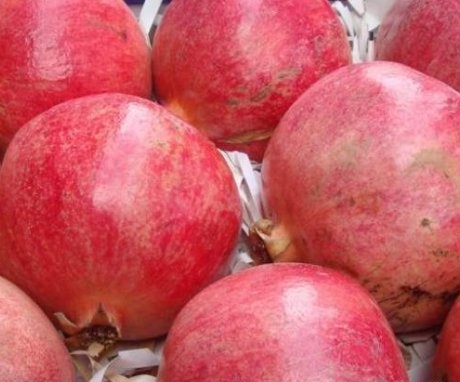
I love pomegranate and in season I always buy it every day. I can say that I get sick much less often than before. It helps well with anemia, but I try to prevent illness and eat well.
Pomegranate fruits have always been considered a source of iron, which is necessary for the body weakened by the disease. Another thing is that you can't eat a lot of it, and store juice raises very big doubts in terms of naturalness.